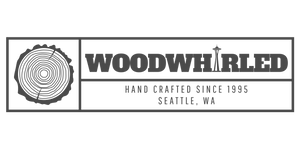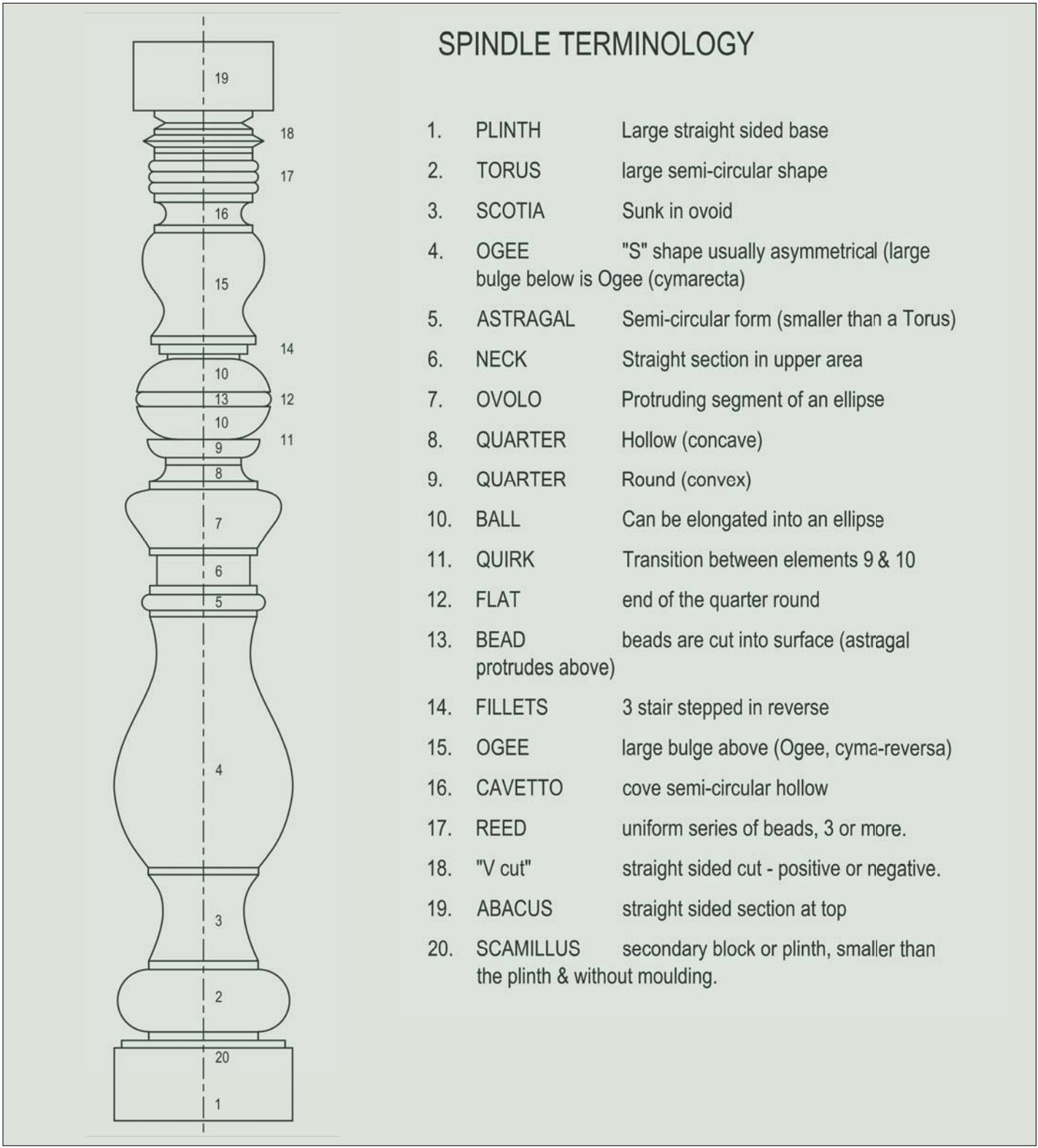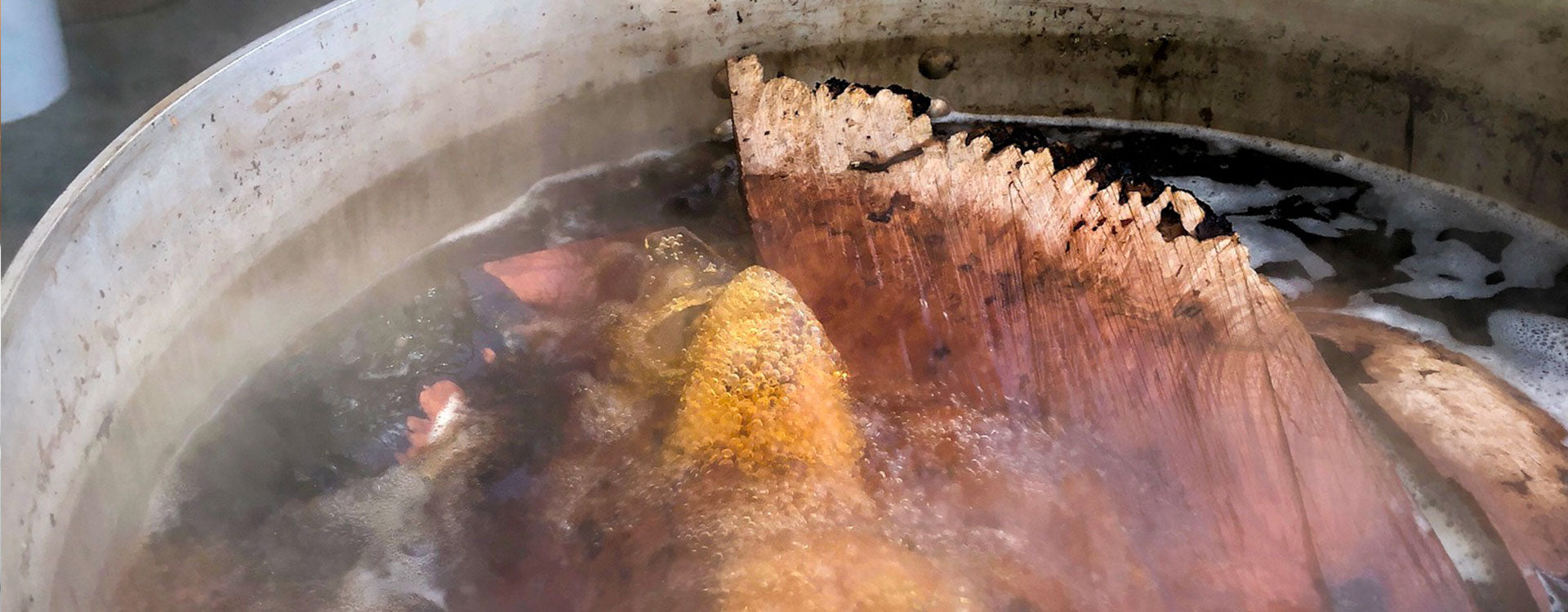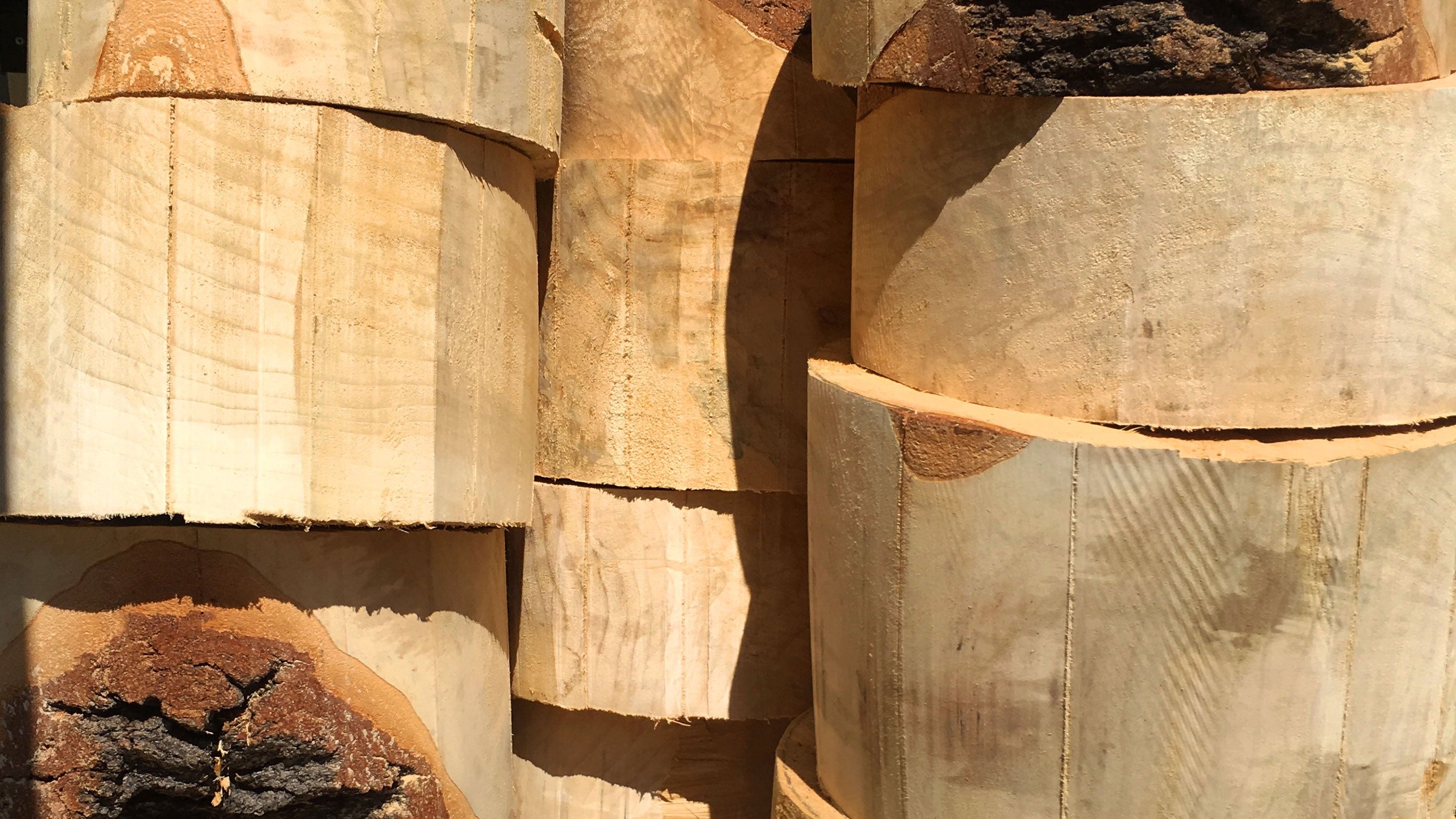Parts of the Lathe
Headstock
The headstock is to the left as you stand in front of the lathe (if it is not, walk around to the other side before someone notices what you are doing). The headstock is the business end of the lathe, where the power provided by the motor is applied to the wood. Some headstocks are fixed in place, some can rotate through 360-degrees, and some can travel down the length of the lathe. Each of these options allows you to turn larger diameter pieces that would be done ordinarily.
Size
The size of the lathe is determined by two factors; the distance from the center of the spindle to the surface of the bed tells you what the maximum diameter limit is; the distance from the end of the spindle to the inside end of the tailstock tells you what the length of the piece can be.
Spindle
The spindle is usually driven by pulleys and belts, and the wood is attached to the spindle. The spindle is threaded on the outside in order to accept various attachments, and is usually hollow to also accept various accessories; these accessories are held in place by a specific TAPER (called a MORSE TAPER and is rated by differing sizes, such as #1, #2, #3 or #4).

Bed
The bed is the structure upon which all of this is mounted, and can be of timber, round tubes, machined cast iron or steel.
Toolrest
The toolrest is adjustable in height and rotation and can be moved along the length of the bed by loosening the BANJO and retightening it when the desired position is found.
Tailstock
The tailstock is the part of the lathe furthest from the headstock, and is also moveable (and removable). The tailstock has a movable / adjustable part driven by a hand wheel/screw mechanism, and is usually hollow and also fitted with morse taper to accept various accessories.
Motors
The motors are usually electric on modern lathes (although several very good lathes use hydraulic motor instead), and can be configured as A/C, D/C, fixed speed, variable speed, reversible, single rotation, electronic braking, and not all motors drive through pulleys: some are direct drive.





37 comments
combigan generic prices buy generic brimonidine
avana 200 mg avanafil vs cialis
cialis canadian https://canadacialisstore.com/ cialis, sale, canadian pharm.
chloroquine tablets amazon https://chloroquineorigin.com/ drug chloroquine
viagra canada for sale https://canadaviagrastore.com/ generic drug for viagra in canada